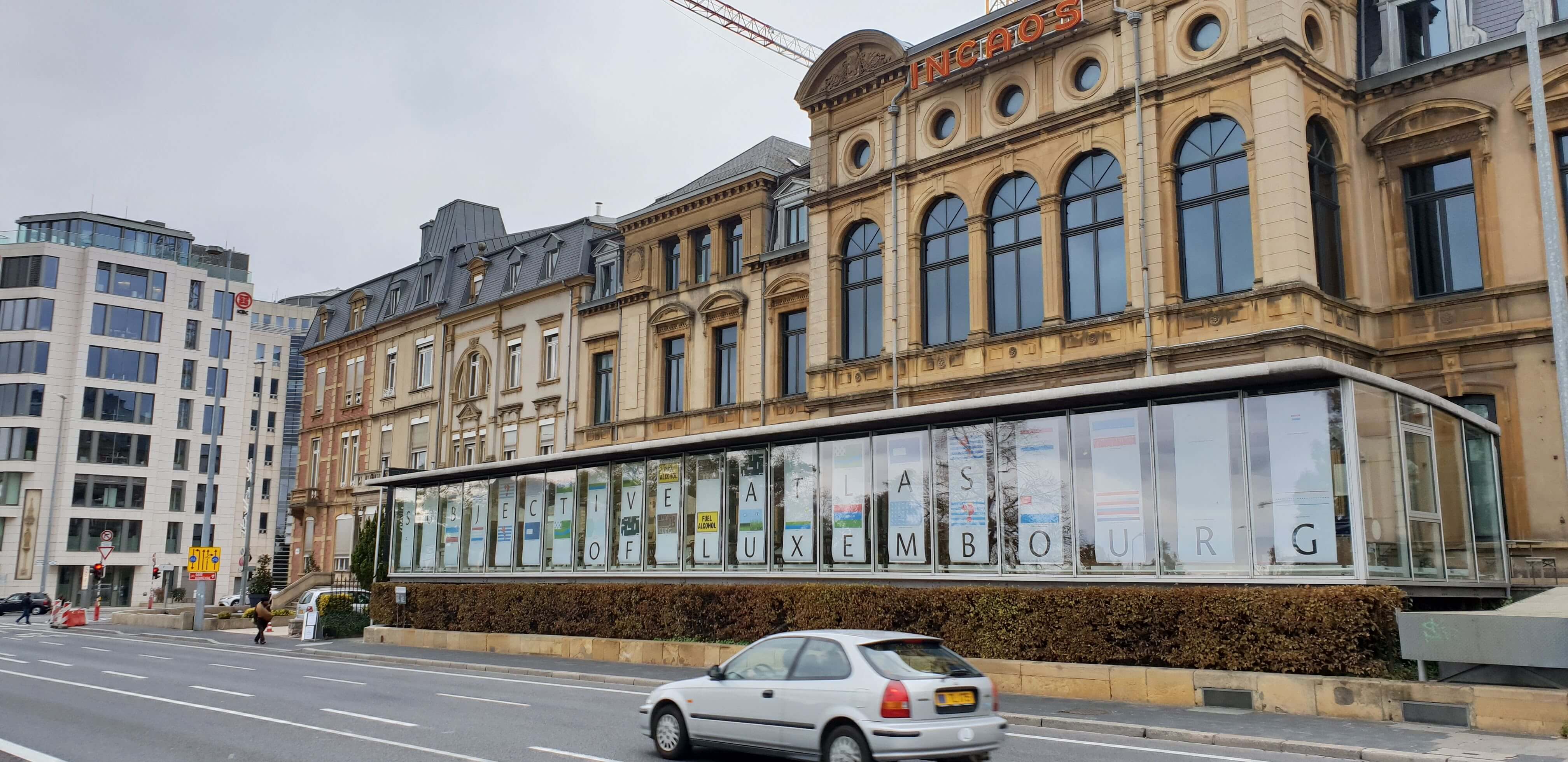I love a building with a bit of an unexpected history.
Whether it’s the Ish-Blloku area of Tirana – once a restricted compound for members of the Communist politburo and now the Albanian capital’s party area, or every Wetherspoons in the UK that used to be a bank, I am fascinated by buildings that have expanded beyond their original purpose. And the Casino Luxembourg is no exception.
History
Casino Luxembourg began life as the Casino Bourgeois, a social club for wealthy Luxembourgers. The place had its own restaurant and wine cellar, along with other rooms for relaxing and gambling. Patrons would dine on fancy caviar whilst rubbing shoulders with the great and the good (visitors included the likes of Winston Churchill).
The joint went bankrupt in the 50s and was bought over by the Cultural Circle of the European Communities who used it for various purposes. In the mid-90s, in preparation for Luxembourg’s year as the European Capital of Culture it was converted into a “contemporary art forum.” It has served this purpose since then and was renovated in 2016 to become the building that you can visit today, which includes large, open exhibition space and a modern eatery.
At least two books, including one cleverly titled “Ceci n’est pas un Casino” which the restaurant’s hospitality manager kindly shared with me, recount the building’s colourful history. I wish I had had time to read them from cover to cover because it seems like a building brimming with interesting stories and scandalous secrets.
ca(fé)sino
Sitting in the building’s new restaurant, ca(fé)sino (geddit?), I felt that history to be very much alive and well. With deliberately worn paint on the walls and all original features still in tact, it felt like one day, all of a sudden the croupier had just decided to stop dealing, the games had stopped, everyone had left and that time had refused to pass since. It was a stunning room – large, bright and airy. Mirrors on one side reflected the light coming in from the tall windows on the opposing wall. The view looked out onto the “Aquarium”, a large glass and steel pavilion attached to the front of the building (sadly no fish in here). The floral, period reliefs which adorned the pale walls were contrasted by the modern, long, banquet-style table and sleek, stainless steel candelabras which took centre stage in the middle of the room.
Most eye-catching was the seemingly out of place light installation hanging from the ceiling. Two neon strips had been bent into the shape of sound waves – one represented the first line of the Communist Manifesto (seriously, why does Communism follow me wherever I go?) and the other a line from Nirvana’s cover of The Man Who Sold the World. One bright pink, the other purple, they hung side by side, stretching the length of the room. They gave the room a gritty, almost seedy twist and I found myself unable to keep my gaze from this simple artwork.
I had come to ca(fé)sino to enjoy their brunch familial, which is available every Saturday and Sunday. At €27.50 per person it’s not the cheapest thing you’re going to do in Luxembourg but I would argue that it’s more than worth it. It’s buffet style which means you can easily get your money’s worth.
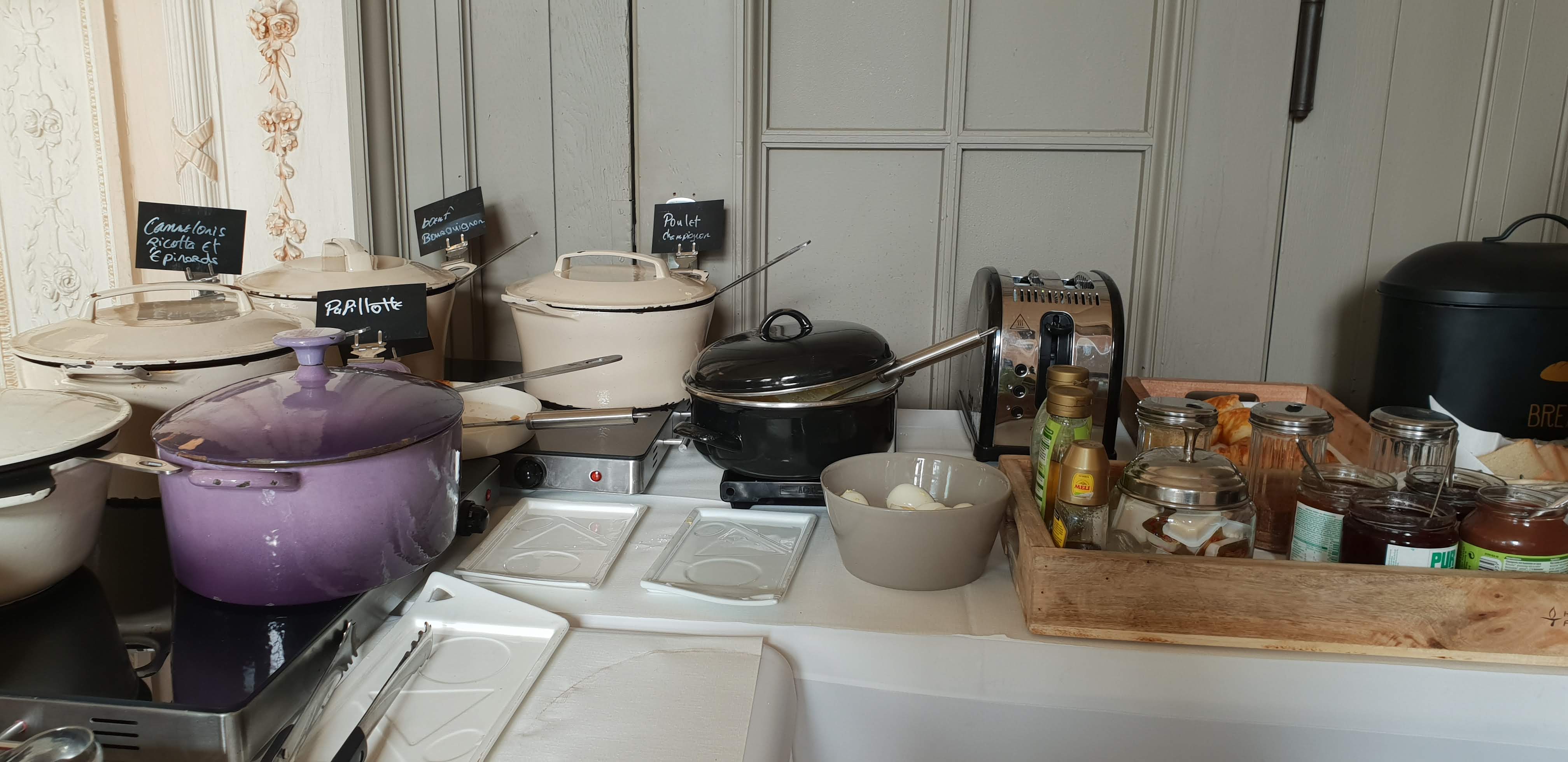
The salad bar had delicious fresh tomatoes drizzled in pesto, crunchy beetroot and thick slices of sausage rolls. Fresh bread with all the condiments you could dream of were sat next to magnolia and poppy-red coloured casserole dishes. Contained within them was an array of traditional French delights such as rich bœuf bourguinon, a summery and colourful ratatouille and prawns cooked en papilotte. Also to be found was spätzle, a type of egg noodle of Germanic origin, along with thick, juicy sausages and much, much more.
Desert consisted of an array of fruit tarts that glistened under the light like jewels and soft, airy mousses. The highlight though was definitely the salty cured ham. One of the waiters could regularly be seen slicing the meat with a medieval looking contraption and topping up the plate which would empty quickly after each time it was filled.
Absolutely every bite of food was saturated with flavour. Even the risotto which was just plain parmesan was rich, creamy and so incredibly more-ish. My only regret is not having eaten more. This place is the perfect weekend treat and I cannot recommend dining here enough if you are in Luxembourg.
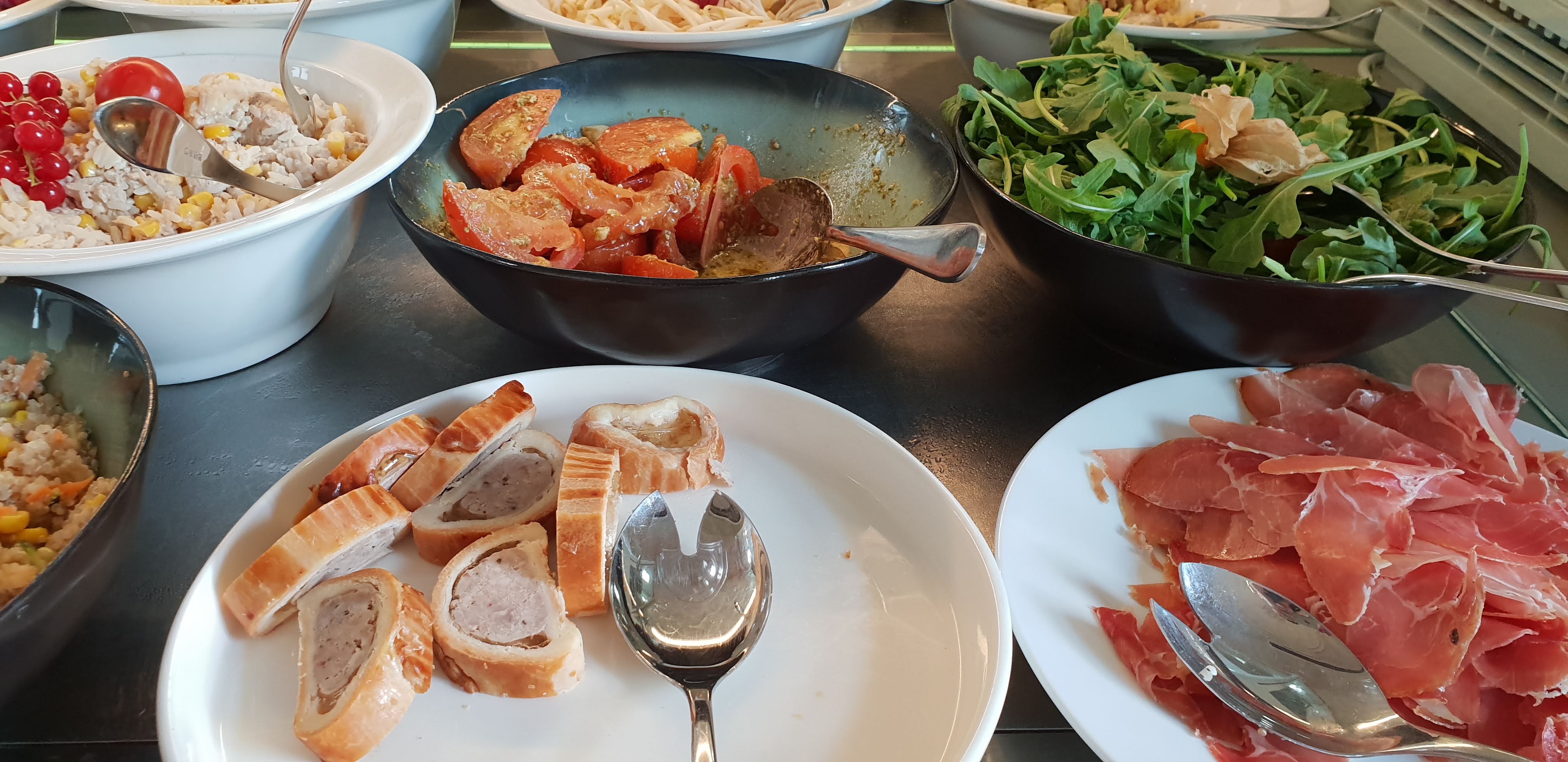
The Art
Jittering from the second espresso I had had (turns out coffee in the UK is weak as shit – who knew?), I waddled out of the restaurant to explore some of the art. Like almost everyone who I met in Luxembourg, the man at the reception smiled warmly and bonjour-ed at me as I walked past.
Obviously the exhibitions in the gallery regularly change but the one that I managed to catch, Celebration Factory by Filip Markiewicz, a Luxembourgish artist of Polish origin, was well made and thought provoking. I’m no expert on contemporary art, but this piece was an examination of the current state of the European Union – very fitting in a country like Luxembourg which feels like Europe distilled and one that was also a bit of a punch in the stomach given the current UK political situation.
An eclectic mix of mediums, the exhibition featured everything from video installations to drawings to a miniature train set to Donald Trump. The highlight for me though was the small neon signs of text featuring powerful phrases such as “Euphoric Union”, “Novichok Love” and “Fake Better”. I’m pretty sure art is supposed to make you feel something and this exhibit definitely sparked something in me – a little bit of discomfort and shame but also admiration for the artist.
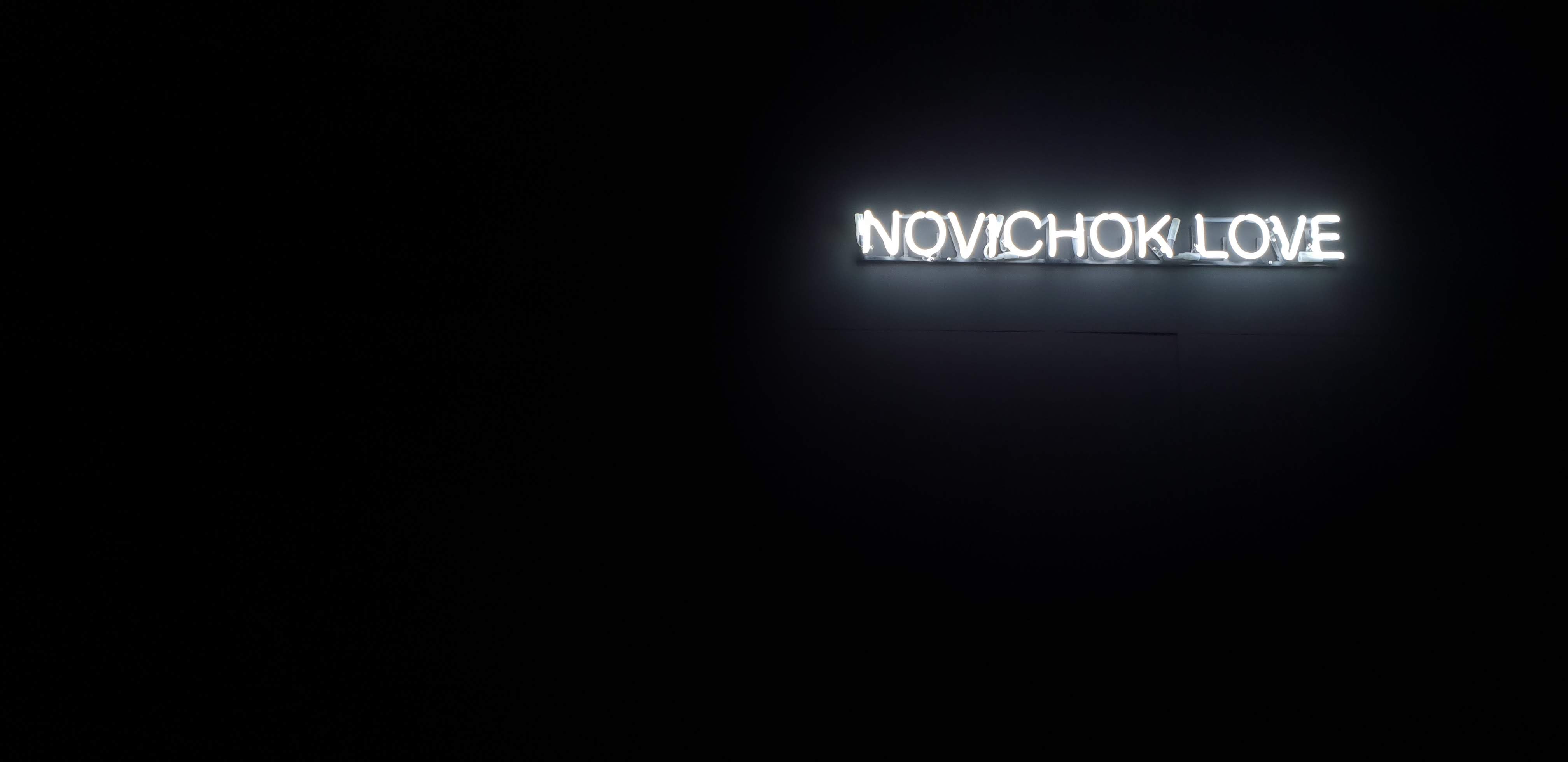
The gallery’s token community art project, Subjective Mapping was for once not just the outcome of some local school kids sticking pasta on coloured card and was actually a really interesting look into how politicians and higher powers shape how we view the world through cartography. Locals had designed their own new Luxembourgish flag – my favourite had something to do with beer.
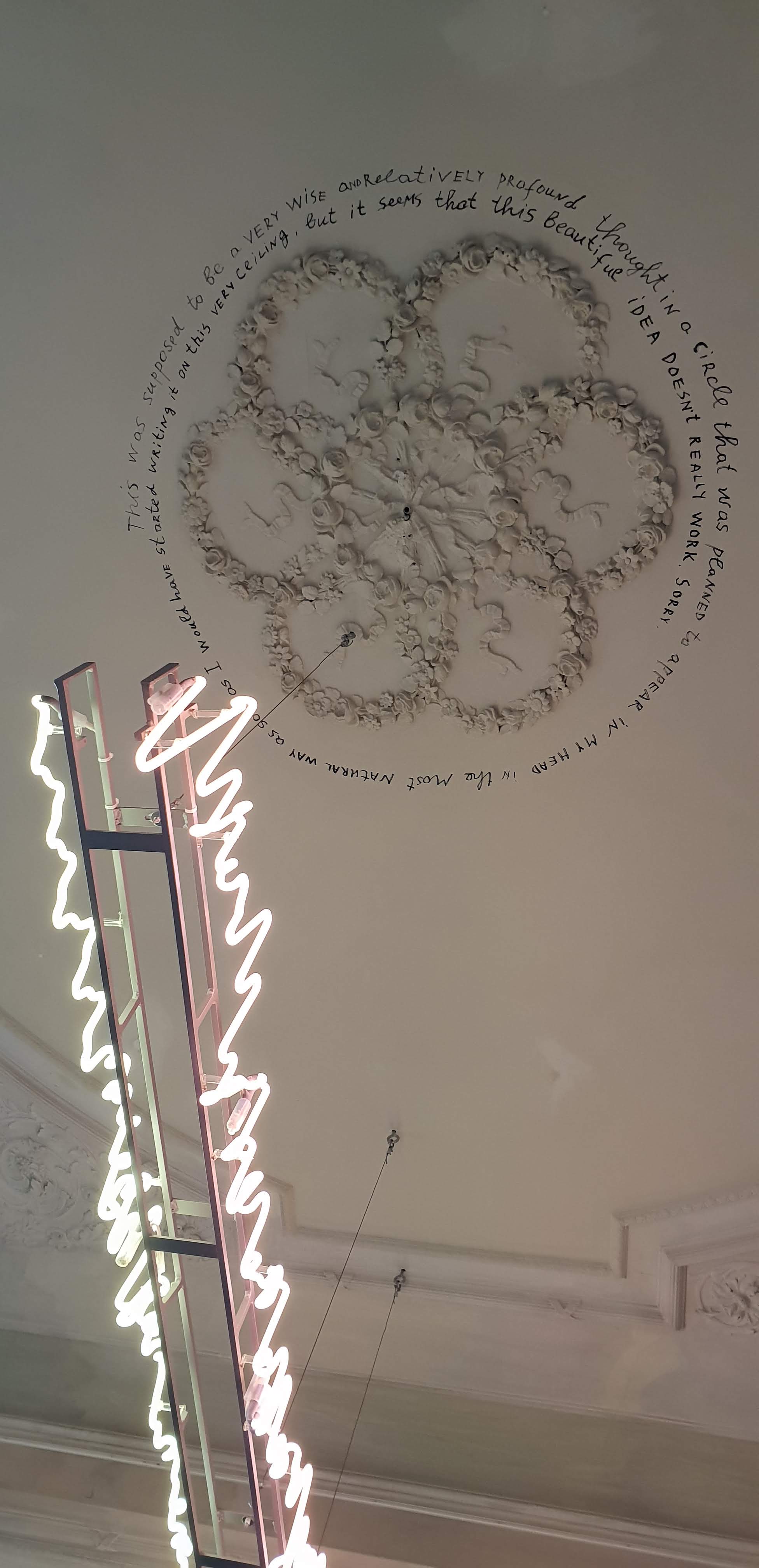
That’s not forgetting the gallery’s permanent exhibitions which are all fashioned as integral fixtures and fittings of the building. Alongside the sound waves in the restaurant is a black marker scribble circled around one of the reliefs that reads:
“This was supposed to be a very wise and relatively profound thought in a circle that was planned in my head to appear in the most natural way as soon as I would have started writing it on this very ceiling, but it seems that this beautiful idea doesn’t really work. Sorry.”
On the outside of the building is a peculiar white shape jutting out from one of the window frames. Installed as a “balcony” and to “trigger a dialogue between the interior and exterior space” it looks oddly out of place and almost like the remnants of some sort of construction works. On the other side of the exterior is another curious neon installation which reads Incaos – an anagram of the word “casino”. It sits in the same place where the building’s casino sign originally sat and is a really interesting way of modernising the building whilst still retaining its heritage.
Whilst I would love to have had a chance to visit the Casino at the height of its hedonistic heyday, like much of my time in Luxembourg, my visit to the Casino Luxembourg was sublimely pleasant – it’s a calm and relaxing, yet thought-provoking space with phenomenal, delicious food. And one that I would recommend to anyone visiting the city.
The Casino Luxembourg is open from 11am – 7pm (closed Tuesdays) and is free to enter. Check out the Casino Luxembourg website or Visit Luxembourg for more information. Also many thanks to Visit Luxembourg for organising this visit on my behalf.
